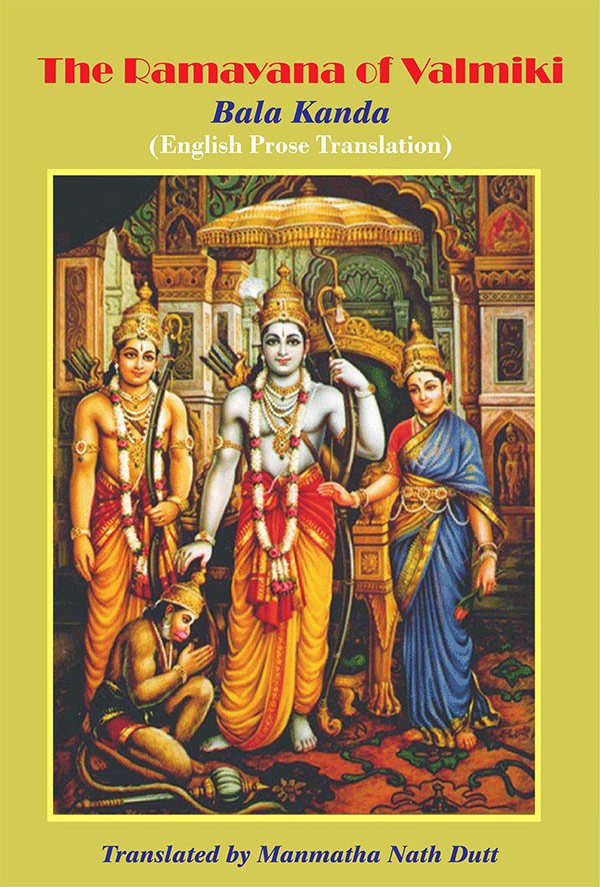Ramayana of Valmiki
by Hari Prasad Shastri | 1952 | 527,382 words | ISBN-10: 9333119590 | ISBN-13: 9789333119597
This page is entitled “description of the aerial chariot pushpaka” and represents Chapter 7 of the Sundara-kanda of the Ramayana (English translation by Hari Prasad Shastri). The Ramayana narrates the legend of Rama and Sita and her abduction by Ravana, the king of Lanka. It contains 24,000 verses divided into seven sections [viz., Sundara-kanda].
Chapter 7 - Description of the Aerial Chariot Pushpaka
Then that mighty monkey continued to explore those dwellings fitted with golden windows, studded with emeralds, resembling a mass of clouds in the rainy season rent by lightning and traversed by flocks of cranes. And he beheld various halls and buildings stored with conches, bows and weapons of war, furnished with turrets as high as hills, and these mansions, containing treasure of every kind were held in regard by both Gods and titans and were flawless and constructed by Ravana by his own power.
Hanuman having scoured the mansions of that Lord of Lanka meticulously furnished with every comfort as if Maya had created them, thereafter visited the palace of that King of Rakshasas himself, which surpassed all others and resembled a mass of towering clouds. Of incomparable loveliness, it seemed as if heaven itself had descended on earth and its beauty was dazzling. Teeming with innumerable gems, trees of every kind covered it with flowers like the summit of a mountain on which snow has fallen; beautiful women served as its ornaments and it shone like a cloud riven by lightning; such was its splendour that it resembled a marvellous chariot drawn through the skies by ravishing swans.
Like the peak of a mountain rich in ore or the firmament adorned by the moon and stars or like clouds of many hues, it glistened with innumerable gems. Artificial rocks made of clay, resembling mountain ranges, planted with counterfeit trees laden with heaps of flowers, fashioned with stamens and leaves could be seen there and improvised dwellings, dazzlingly white, with pools covered with flowering lotuses possessing golden stamens, and diverse groves and ravishing fountains.
The monkey gazed on the vast aerial chariot named Pushpaka, which, gleaming like pearl, planed above the highest buildings and contained birds made of emerald, silver and coral and serpents marvellously fashioned of various metals and life-sized horses and birds with charming beaks and wonderful wings which contracted and expanded, their plumage like that of Kama himself, posed on gold and coral flowers; and there were elephants with tapering trunks, bearing lotus leaves, engaged in showering water on the Goddess Lakshmi, who, seated in a pool, held lotuses in her fair hands.
Such was the marvellous creation which met the astonished monkey’s gaze, which resembled a mountain of charming caverns or a tree from whose hollows delicious fragrance escapes in the springtime.
Yet that monkey searching that exalted city, protected by the ten-headed Ravana, was unable to find the daughter of Janaka, so highly regarded and deeply afflicted and who had been conquered by the virtue and valour of her lord. And not finding Janaka’s daughter, despite his investigations and the vigilance of his search, the illustrious Hanuman, who was virtuous and generous of soul, felt a burning anguish take possession of his heart.
